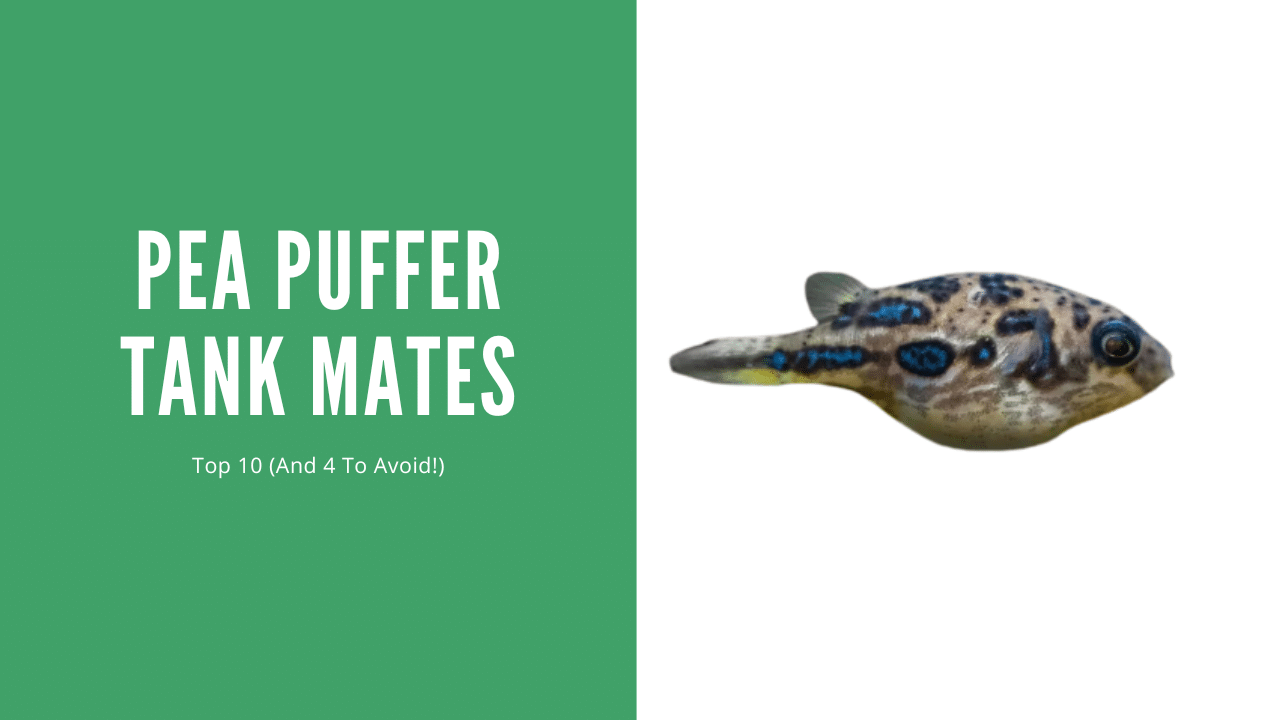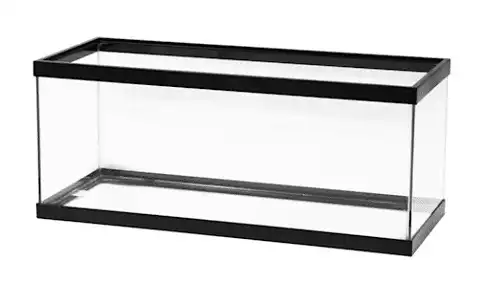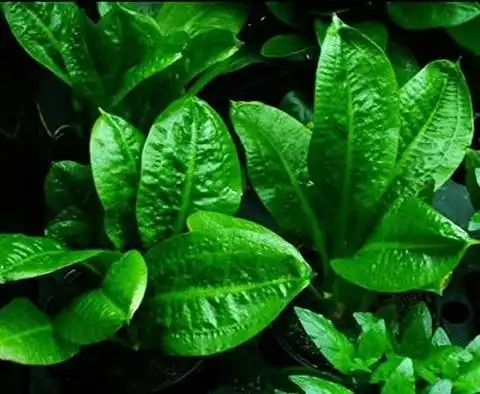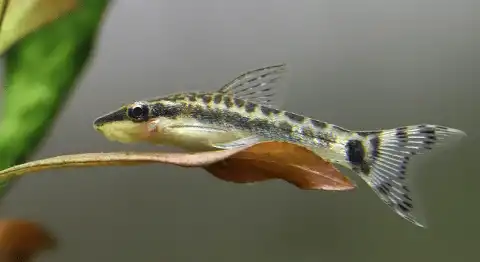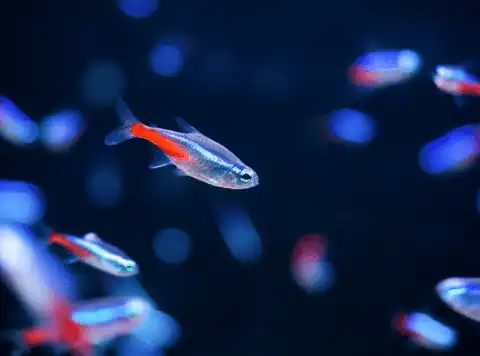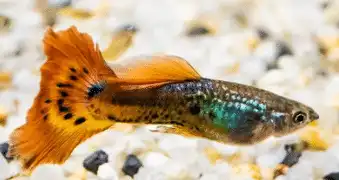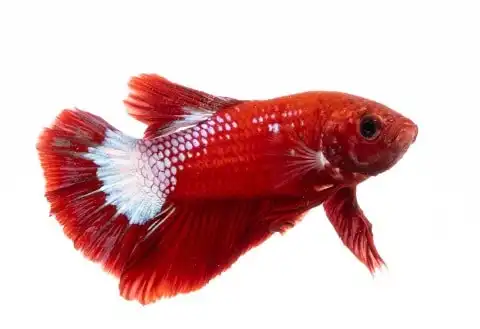Thank you for visiting! By the way… any links on this page that lead to products on Amazon and other stores/partners are affiliate links Aquarium Store Depot earns a commission if you make a purchase.
Are you considering adding pea puffers to your aquarium, but concerned about finding the right pea puffer tank mates for these tiny, but feisty fish? Fear not! We’ve put together a comprehensive guide to help you make the best choices for a harmonious underwater community. Get ready to discover the perfect companions for your pea puffers!
Key Takeaways
- Pea puffers are territorial and semi-aggressive fish
- Provide enough space and hiding spots, as well as the right water parameters to create an ideal habitat.
- Choose tank mates for your pea puffer – good options include Otocinclus Catfish, small Plecos & other Pea Puffers. Avoid Guppies, Rasboras & Betta Fish.
- All fish are a potential risk – always have a back up plan
Understanding Pea Puffers
Pea puffers are renowned for their playful personalities and dainty size. Although these little fish may be small, they can still exhibit a great deal of aggression. Hence, it is essential to understand what type of environment will support them so that other aquatic life forms in the tank don’t come under attack from this active species!
Pea Puffers have a number of traits that will make them a poor fit in community fish tanks. They are territorial and very curious creatures that regularly get bored. This boredom is what makes them nip other fish, similar to how tiger barbs do the same. Not only do they nip, but they have powerful jaws that can hurt, maim, or kill other fish species.
Size and Space Requirements
A minimum tank size requirement of a 20 long tank must be met to each consider other tankmates other than pea puffers. Furthermore, a heavily planted habitat combined with plenty of places to hide is a must so other fish have places to hide from your pea puffer’s aggression outbursts.
A classic 20 gallon aquarium in its 30 inch long variant. A very popular aquarium.
The little pea puffers need room to be comfortable. For just one of them, the ideal is a 10-gallon tank. With six of these fish together, you’ll want no less than 20 gallons in order that they don’t become aggressive or hurt their aquarium companions. It’s essential to create plenty of space and hideaways so peace can reign under the water!
While 20 is the minimum, a 29 gallon tank would be recommended or even a 40 gallon breeder. The larger the tank, the higher the chances of success. Males will also be more aggressive than females. While you won’t be able to tell the differences between the two when they are young, over time the female will become larger and rounder than the male.
Water Conditions And Environment
Providing a secure and comfortable environment is essential for the health of pea puffers and their tank mates. It’s best to keep warm, soft water with consistent pH levels in an fish tank filled with live plants that offer plenty of hiding spots. However, these fish are very adaptable. Pea puffers can live in hard water.
The main thing with a tank setup with other fish is hiding places. Heavily planted tanks are ideal. You will want to utilize hardy plants such as Amazon Sword or Java Fern. Pea puffers will happily nip at plants out of boredom and less hardy plants will die or not thrive due to the beating taken from your puffers.
A classic background aquarium plant. Grows large and will be a centerpiece in your aquarium
A Word Of Caution
When considering pea puffers for an aquarium, it is important to be aware of their potential aggression. The fish may act aggressively towards smaller species with slow or long-finned movement since they are prone to fin-nipping behavior and are territorial.
Even with a larger tank, all puffers have different personalities. In this list, I have included a chance of success rating so you are aware of the risk. As a rule of thumb, here are a few general tips:
- Introduce the pea puffers last or rehome temporarily while introducing the new fish
- Observe the puffers in a breeding box in the tank to monitor interactions
- Keep your puffers well fed, a well-fed fish will generally be less aggressive (e.g., brine shrimp, bloodworms, etc)
- Always have a backup plan, and be prepared to remove the puffers right away if severe aggression occurs
The 10 Best Pea Puffer Tank Mates
Now on to our list. Here is in my mind, the top 10 options you can try to keep with Pea puffers. I have included the following stats for each species.
- Scientific Name
- Adult Size
- Water Temperature Range
- Minimum tank size
- Care Level
- Diet
- Origin
- Swimming Level
- Change Of Success
Let’s get started with our list!
1. Other Pea Puffers

- Scientific Name: Carinotetraodon travancoricus
- Adult Size: 1 inch
- Water Temperature: 72° – 82° F
- Minimum tank size: 10 gallons
- Care Level: Moderate
- Diet – Carnivore
- Origin – India
- Swimming Level – Top, middle, below
- Change Of Success – Guaranteed
The best tank mate is to just had more pea puffers! The ideal ratio for pea puffers is to have 3 females for every male, in order to reduce the chances of them displaying aggression. To ensure they cohabitate happily, a spacious and well-planted aquarium should be provided as it gives each puffer enough room and hiding places. Having at least three fish will give these critters companionship too!
2. Otocinclus Catfish
A small algae-eating fish. Also great with freshwater shrimp.
- Scientific Name: Otocinclus spp.
- Adult Size: 1.5 to 2 iches
- Water Temperature: 74°F to 79°F
- Minimum tank size: 20 gallons
- Care Level: Moderate
- Diet – Herbivore
- Origin – South America
- Swimming Level – Bottom to middle
- Change Of Success – High
Otocinclus catfish make terrific tankmates for pea puffers due to their peaceful nature and efficient algae-eating capabilities. These small fish help keep the aquarium environment tidy by consuming excess vegetation, making them a highly beneficial addition to any community of aquatic animals.
It is important that these fish have an abundance of plants and algae in order to survive while living alongside your pea puffer friends! Supplemental feeding is a must!
3. Corydoras Catfish
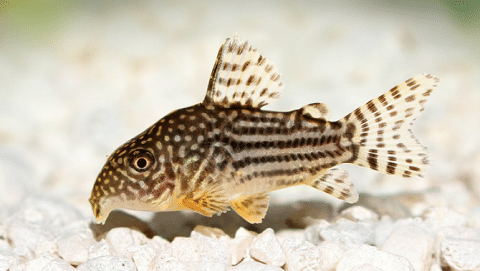
- Scientific Name: Corydoras spp.
- Adult Size: 2 to 3 inches, usually
- Water Temperature: 72°F to 79°F (22 to 26°C)
- Minimum tank size: 10 gallons
- Care Level: Moderate
- Diet – Omnivore
- Origin – South America
- Swimming Level – Bottom
- Change Of Success – High
Corydoras catfish provide a great addition to an aquarium with pea puffers due to their calm, placid nature. Their armored bodies help ensure they can live in harmony with the fish that make up this type of community tank with a lower risk of aggression occurring. In terms of maintaining cleanliness within the habitat, these bottom-feeders are invaluable as they consume bits and pieces left behind from feeding time for all living occupants. Their omnivorous nature makes them a great scavenger with the puffer’s messy nature.
4. Bristlenose Pleco
The Bristlenose Pleco is a smaller Pleco that does a great job of eating algae. Peaceful and gets along with most fish
- Scientific Name: Ancistrus Cirrhosus
- Adult Size: 4 to 5 inches usually
- Water Temperature: 73°F to 80°F
- Minimum tank size: 20 gallons
- Care Level: Easy
- Diet – Herbivore
- Origin – South America
- Swimming Level – Bottom
- Change Of Success – High
The Bristlenose Plecos are peaceful, algae-eating fish that can coexist happily with the pea puffers. Their armored body provides them protection, while their algae consumption helps to keep a puffer tank clean from unwanted growth. Hence, these small and unique looking creatures make for an excellent choice when setting up a friendly environment between your pea puffers and other aquatic animals in one’s home aquarium.
5. Kuhli Loaches
Kuhli Loaches are hardy bottom-dwelling fish. Nocturnal in nature. Gets along with many fish and tolerate of coldwater environments
- Scientific Name: Pangio Kuhlii
- Adult Size: 4 – 5 inches
- Water Temperature: 73 to 86° F
- Minimum tank size: 20 gallons
- Care Level: Easy
- Diet – Omnivore
- Origin – Southeast Asia
- Swimming Level – Bottom
- Change Of Success – High
Kuhli Loaches are not overly aggressive and spend most of their time at night. They can be easily kept with pea puffers in an aquarium, as long as they have a soft sand substrate that allows them to burrow comfortably and places to hide. An environment like this allows both species to thrive side by side, giving the tank owner plenty of interesting activity to observe underwater.
6. Zebra Danios
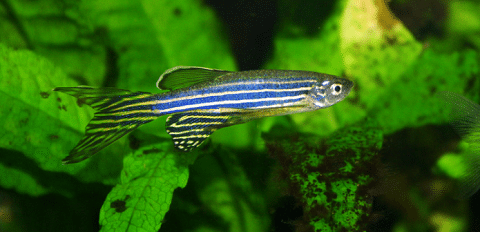
- Scientific Name: Danio rerio
- Adult Size: 1 inch
- Water Temperature: 72 to 81° F
- Minimum tank size: 10 gallons
- Care Level: Easy
- Diet – Omnivore
- Origin – Eastern India
- Swimming Level – All
- Change Of Success – Medium
Zebra Danios, a type of schooling fish known as being peaceful fish and swift in the water. They are fast enough to generally avoid the aggression of your pea puffer as long as the tank is large enough for them to maneuver.
Given they are dither fish, their nature will help bring out your pea puffers out in the open more. There still is a chance these fish may be victims of nipping or being eaten (especially long finned types), but of all non bottom feeding fish, these danios have the best chance of success.
7. White Cloud Minnow
A very peaceful fish that does well in coldwater fish. Other minnow varieties are also available
- Scientific Name: Tanichthys albonubes
- Adult Size: 1 inch
- Water Temperature: 57°F to 72°F
- Minimum tank size: 10 gallons
- Care Level: Easy
- Diet – Omnivore
- Origin – China
- Swimming Level – Mid to Top
- Change Of Success – Medium
White Cloud Minnows are a great choice for an aquarium due to their peaceful temperament and fast speed. Like the Zebra danio, they are fast enough to avoid the aggression of your puffer. They do best in groups when it comes to swimming, creating even more harmony within community tanks as they scavenge. These hardy fish truly bring life into your tank! As another dither fish, they will encourage your dwarf pufferfish to be more active fish.
They are still at risk of being nipped or eaten; these colorful fish species have a lower chance than others.
8. Amano Shrimp
Best For Planted Tanks!
When it comes to keeping a healthy planted aquarium, Amano Shrimp are the best. These hard-working crustaceans will dutifully wipe your plants and rockwork clean of algae. Their appetite for different types of algae that can't be matched by other shrimp breeds!
- Scientific Name: Caridina multidetata
- Adult Size: 2 inches
- Water Temperature: 65°F to 78°F
- Minimum tank size: 5 gallons
- Care Level: Easy
- Diet – Omnivore
- Origin – Japan
- Swimming Level – All
- Change Of Success – Low
Amano Shrimp can make good tank mate for pea puffers. These peaceful invertebrates are efficient algae eaters, consuming both the excess food in the tank as well as keeping it clean from an algae bloom. Due to their docile nature, they can live happily with a puffer without much trouble at all. They require minimal care while occupying various sized tanks just fine!
However, if not placed in a heavily planted tank there’s a good chance your Amano will become a snack for the pea puffer. A larger tank and lots of plants are essential. Do not attempt if you have a mostly open aquascape setup!
9. Molly Fish
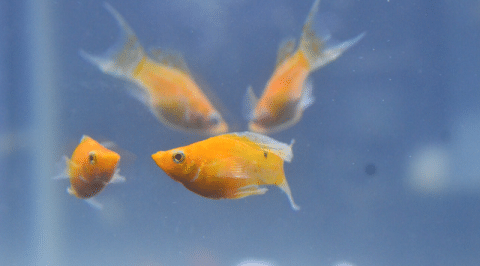
- Scientific Name: Poecilia sphenops, P. latipinna, P. velifera, etc.
- Adult Size: 4 inches
- Water Temperature: 72 ° to 82 °F
- Minimum tank size: 20 gallons
- Care Level: Easy
- Diet – Omnivore
- Origin – North and South America
- Swimming Level – Middle
- Change Of Success – Low
Molly Fish are potentially great companions for pea puffers in the same community tank. However, a large tank is needed to pull it off. While the dwarf puffer won’t eat the Mollies, it is possible for them to get nipped. A tank of at least 29 gallons is a must to attempt, with your highest success at a 40 gallon tank.
This is the only livebearer that makes our list. All other livebearers are too small and could be mortally wounded or eaten.
10. Neon Tetras
Use Promo Code ASDFLIPPROMO
One of the most popular freshwater community schooling fish available in the aquarium trade. Great neon blue colors!
- Scientific Name: Paracheirodon innesi
- Adult Size: 1.5 inches
- Water Temperature: 70 ° to 79 °F
- Minimum tank size: 10 gallons
- Care Level: Moderate
- Diet – Omnivore
- Origin – South America
- Swimming Level – Top to Middle
- Change Of Success – Low
Neon Tetras are a type of aquarium fish known for their stunning colors and peaceful nature. While they are fast enough to avoid the pea puffer, they need a long enough tank and enough planted life to cohabitate with them safely.
They also need to be housed in large numbers. Knowing this, I would not attempt housing them with a dwarf puffer in anything less than 29 gallons. You will have the most success in a 40 gallon breeder.
Bad Choices
When it comes to tank mates for pea puffers, some fish species are not recommended due to their size, temperament, or vulnerability. The following fish should be completely avoided in order to keep the inhabitants safe and happy. It’s important that these factors are taken into consideration before adding any other types of creatures into your pea puffer aquarium!
1. Guppy Fish
An undemanding fish that is a livebearer. Many varieties available
Guppy Fish, with their graceful fins and delicate swimming style, can make them attractive targets for pea puffers. These fish are also known to reproduce quickly, which could make the fry snacks for the puffer. However, guppies are too small to be housed with a pea puffer. While they are fast and can avoid the puffer, a nip could result in a moral wound given their size or they can be eaten all together.
2. Rasboras
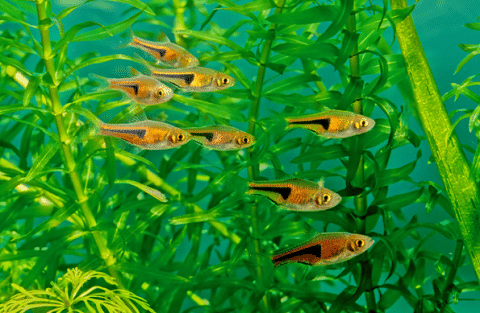
It’s best to steer clear of combining rasboras and pea puffers in the same tank. These small fish can become easy targets of aggression, inducing stress for both types of species. To create a more balanced habitat, it is advisable not to mix them together as this could be detrimental for the rasboras. Although these delicate little creatures are peaceful by nature, they’re often too vulnerable when exposed to attacks that come with pairing them up with predatory fish like pea puffers.
As a side note, the Chilil Rasbora is often mentioned in blogs. I will tell you right now if your pea puffer manages to nip one of them they will be killed nearly instantly! Don’t risk it. Zebra Danios fare a much better chance.
3. Angelfish
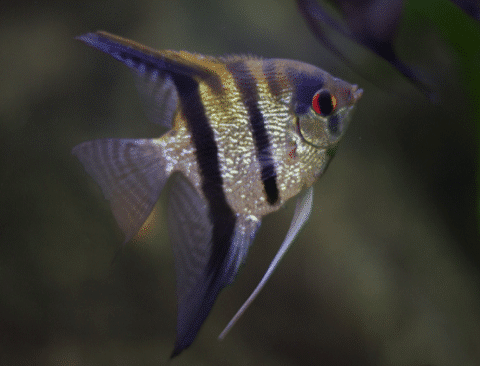
Angelfish and pea puffers are a combo that will end up as a bloodbath. The pufferfish will enjoy nipping at the fins of the Angelfish, while the Angelfish is big enough to stand up on its own and fight back. It is even more disastrous if either fish is breeding. For both animals’ welfare, it’s recommended they remain separate inhabitants of different tanks/aquariums.
4. Betta Fish
Use Coupon Code ASDFISH at Checkout
Betta Fish are one of the most beautiful varieties of freshwater fish available in the hobby. Easy to care for with plenty of varieties!
Housing a betta fish and pea puffers together is not advisable since both are territorial in nature. However, this is a battle the pea puffer will win as their beaks are powerful enough to heavily damage the Betta. Furthermore, fancy finned varieties will have zero chance against the pufferfish. Fights will easily result in an infection for the Betta and possibly death from stress. These are both species completely incompatible with each other and should not be housed together.
Frequently Asked Questions
What can be housed with pea puffers?
Pea puffers are semi-aggressive, which makes them a challenge to be housed with other fish. The best fish to house with them are other pea puffers. One lower risk choices include Corydoras, small plecos, and kuhli loaches.
Can a pea puffer be in a community tank?
Keeping pea puffers in their own tank without other fish is the most beneficial for them since they are territorial and semi-aggressive. Your best option is to house them with their own kind in pea puffer tanks.
Do pea puffers need friends?
A 10 gallon tank is the perfect space for a single pea puffer. They are known to be territorial and don’t need any companions in order to stay healthy. Although it’s possible that two or more of them can live happily together with enough room, this isn’t essential.
How big should a tank be for a single pea puffer?
A 10 gallon tank is necessary for keeping a single pea puffer fish.
How can I reduce aggression in my pea puffer tank?
For your pea puffer tank to be a peaceful place, providing plenty of room for swimming as well as hiding spots and ensuring the water is kept clean are key. A longer tank that is longer than 2 feet is also helpful. All these aspects help prevent aggressive behaviors from occurring in this type of aquarium.
Closing Thoughts
To conclude, it is possible for pea puffers to live happily with other tank mates if their special needs and characters are taken into consideration. When looking at space requirements, hiding places, and water quality – which should be kept up to a high standard – as well as being aware of the puffer’s size and behavior, one can establish an enchanting underwater environment that everyone in the aquarium will thrive in! So don’t hesitate anymore. Bring home some amazing cohabitants for your precious little pea puffers today!
If you like our content be sure to subscribe to our YouTube Channel. We post new videos every week. Let know your experience in the comments below!
- About the Author
- Latest Posts
I’m thrilled that you found Aquarium Store Depot! Here you’ll find information on fish, aquariums, and all things aquatics related. I’m a hobbyist (being doing this since I was 11) and here to help other hobbyists thrive with their aquariums! I adhere to a high quality Editorial Process and Review products with real life field usage and practical analysis.

